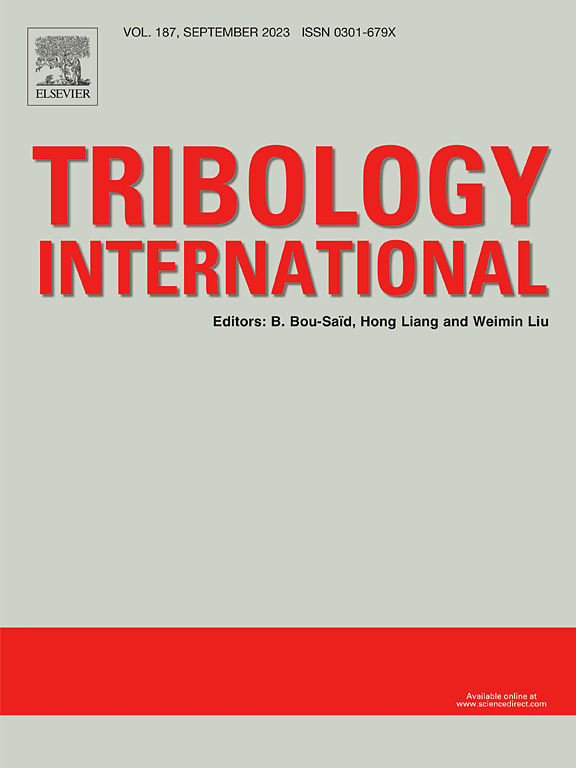Physico-tribomechanical performance of Zn-Al/ZrB2 in-situ composite for sustainable automotive applications
IF 6.1
1区 工程技术
Q1 ENGINEERING, MECHANICAL
引用次数: 0
Abstract
This study presents a comparative analysis of wear and frictional characteristics observed in two materials: a Zn-Al alloy and an in-situ reinforced Zn-Al/9 vol% ZrB2 composite in the dry as well as in the lubricated sliding state.Furthermore, to highlight the potential applications of the Zn-Al/9 vol% ZrB2 in-situ composite, a thorough comparative examination of its wear and frictional properties against commercially prevalent materials in tribological applications has been conducted. The results reveal promising outcomes, demonstrating comparatively lower wear and a higher frictional coefficient in dry sliding conditions. This unique combination of the developed material may be a promising candidate for use in possible braking and clutch materials systems. Conversely, in lubricated environments, the material exhibits low wear and a low COF, indicating its potential suitability for bearing and bushing applications. Moreover, this study not only enhances understanding of wear mechanisms but also opens the way for the innovative application of the Zn-Al/9 vol% ZrB2 in-situ composite in various industrial scenarios. These findings align well with the increasing demand for multifunctional materials in resource-conscious and dynamic industrial environments.
求助全文
约1分钟内获得全文
求助全文
来源期刊

Tribology International
工程技术-工程:机械
CiteScore
10.10
自引率
16.10%
发文量
627
审稿时长
35 days
期刊介绍:
Tribology is the science of rubbing surfaces and contributes to every facet of our everyday life, from live cell friction to engine lubrication and seismology. As such tribology is truly multidisciplinary and this extraordinary breadth of scientific interest is reflected in the scope of Tribology International.
Tribology International seeks to publish original research papers of the highest scientific quality to provide an archival resource for scientists from all backgrounds. Written contributions are invited reporting experimental and modelling studies both in established areas of tribology and emerging fields. Scientific topics include the physics or chemistry of tribo-surfaces, bio-tribology, surface engineering and materials, contact mechanics, nano-tribology, lubricants and hydrodynamic lubrication.
 求助内容:
求助内容: 应助结果提醒方式:
应助结果提醒方式:


